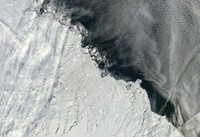Advertisement
Grab your lab coat. Let's get started
Welcome!
Welcome!
Create an account below to get 6 C&EN articles per month, receive newsletters and more - all free.
It seems this is your first time logging in online. Please enter the following information to continue.
As an ACS member you automatically get access to this site. All we need is few more details to create your reading experience.
Not you? Sign in with a different account.
Not you? Sign in with a different account.
ERROR 1
ERROR 1
ERROR 2
ERROR 2
ERROR 2
ERROR 2
ERROR 2
Password and Confirm password must match.
If you have an ACS member number, please enter it here so we can link this account to your membership. (optional)
ERROR 2
ACS values your privacy. By submitting your information, you are gaining access to C&EN and subscribing to our weekly newsletter. We use the information you provide to make your reading experience better, and we will never sell your data to third party members.
Environment
Humans’ Place In Nature
by Rudy M. Baum
February 6, 2012
| A version of this story appeared in
Volume 90, Issue 6
A few weeks ago, the Washington Post carried an article about a local battle between developers and environmentalists. The article was entitled “Battle for Mattawoman Creek,” and it examined successful efforts by environmentalists to block construction of a highway through the Mattawoman Creek watershed in Charles County, Md., southeast of Washington, D.C.
What caught my eye was a quote from Jim Whitehead, a board member on the county chamber of commerce, who told the Post, “The decision to abandon [the connector] because of extremely well-organized and opinionated environmentalists is a crime against Charles County.” Whitehead also said: “This is an astronomically important road. I don’t think [Mattawoman Creek] would have been harmed in any measurable way after the road was built. Nature is so powerful compared to humanity. It recovers remarkably well by itself.”
Really? Blocking a highway through what is still a relatively pristine environment is a “crime against Charles County”? Is any road “astronomically important”?
Beyond the hyperbole, however, is a sentiment that is all too common: Humans are puny. Earth is vast. “Nature is so powerful compared to humanity” that there is nothing humans can do that nature can’t fix. It is a comforting notion. It’s also wrong.
Scientists have quantified humanity’s impact on Earth. In a 1997 paper titled “Human Domination of Earth’s Ecosystems,” Peter M. Vitousek and Harold A. Mooney, in the department of biology at Stanford University; Jane Lubchenco, in the department of zoology at Oregon State University; and Jerry M. Melillo, of the U.S. Office of Science & Technology Policy, examined the effects humans have had on land, oceans, biogeochemical cycles, and biological resources (Science 1997, 277, 494). The paper was the lead paper in a special issue of Science on the topic. Lubchenco, by the way, is now the administrator of the National Oceanic & Atmospheric Administration.
The scientists conclude: “The rates, scales, kinds, and combinations of changes occurring now are fundamentally different from those at any other time in history; we are changing Earth more rapidly than we are understanding it. We live on a human-dominated planet—and the momentum of human population growth, together with the imperative for further economic development in most of the world, ensures that our dominance will increase.”
More recently, a large, multidisciplinary, international team of researchers published a paper in Nature titled “A Safe Operating Space for Humanity” in which they identified planetary boundaries that should not be transgressed (2009, 461, 472). They write: “We have tried to identify the Earth-system processes and associated thresholds which, if crossed, could generate unacceptable environmental change. We have found nine such processes for which we believe it is necessary to define planetary boundaries: climate change; rate of biodiversity loss (terrestrial and marine); interference with the nitrogen and phosphorus cycles; stratospheric ozone depletion; ocean acidification; global freshwater use; change in land use; chemical pollution; and atmospheric aerosol loading.”
The researchers determined that for three of the nine Earth-system processes—climate change, rate of biodiversity loss, and interference with the nitrogen cycle—human activities “have already transgressed their boundaries.”
Human civilization has come into existence during a period of unusual environmental stability, the past 10,000 years known to geologists as the Holocene. As the authors of the Nature paper observe: “Since the Industrial Revolution, a new era has arisen, the Anthropocene, in which human actions become the main driver of environmental change. This could see human activities push the Earth system outside the stable environmental state of the Holocene, with consequences that are detrimental or even catastrophic for large parts of the world.”
Acting as if nature will always take care of itself is no longer an option for humans. There are too many of us and we’re far too clever. It’s time to apply a variant of the Pottery Barn rule to planet Earth: We broke it, we now own it, and it’s time to start fixing it.
Thanks for reading.



Join the conversation
Contact the reporter
Submit a Letter to the Editor for publication
Engage with us on Twitter